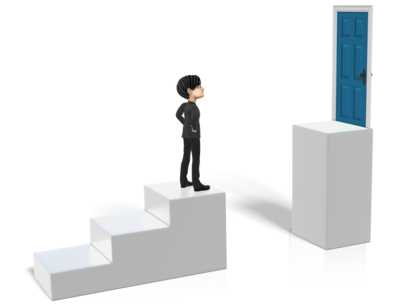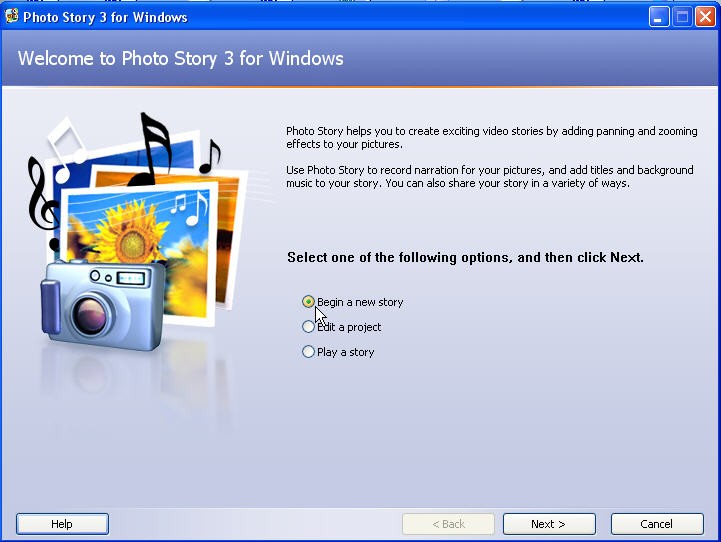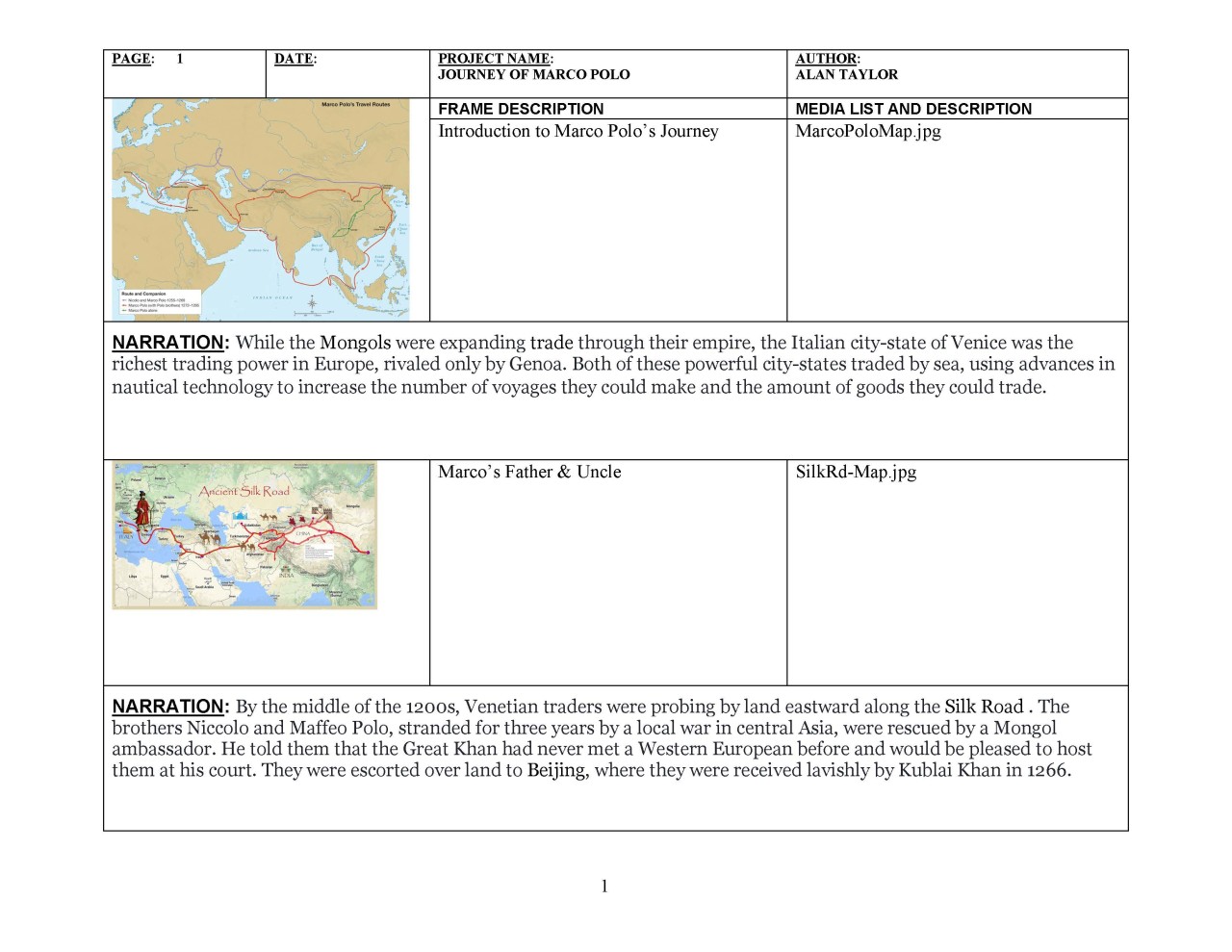What is your ultimate goal?
Before I talk about your ultimate goal, there was one more program that I enjoyed using with students, and that was Microsoft Photo Story 3 for Windows. The best way to describe the program is it's like a junior version of creating a Ken Burn's documentary. The students would use the program to create their own narrative story related to a topic. One example was students learning about Marco Polo's impact on early-world explorers during the Renaissance period in Europe. We watched a movie about Marco Polo's journey and then had students tell the story as if they traveled with Marco Polo using Microsoft Photo Story. I created a document template where they can include information about their travels. Once they completed their storyboard, they were ready to record their narrations, including photos. The nice thing about this program was adding audio, background music, and various transitions between slides and creating that Ken Burns effect to photos. The program is still available to download and will run on Windows 11 and earlier versions of Windows.
Now let's get to the question, "What is your ultimate goal?". One thing that drove undergraduate or graduate students when I was teaching as an adjunct faculty member was when I would ask them, "What's your ultimate goal?" So many times when teaching courses such as Instructional Technology for K-12 Teachers and Technology for Educators, students would at first think the ultimate goal was having the student use technology to complete a project. So, for them, this would mean having students create a PowerPoint or Google Slides presentation. The ultimate goal was completing the presentation and having them stand in front of the classroom and read off their slides.
My ultimate goal was to get them to see that using the technology wasn't the goal. This is an issue that continues to live on. When I first started teaching technology-related courses for educators, it wasn't focused on integrating technology. It was more on learning how to use technology. The course I walked in to teach was an emergency replacement for someone who could no longer teach the course due to a severe injury. When I walked into the class for the first time, several groups were working on different technologies. One group was working on how to use a Smartboard, another was working on using PowerPoint to create lessons, another was working on using Microsoft Publisher, still another was learning to use Movie Maker. It felt more like a training center than a place for these future teachers to learn how technology could fit into a student-centered, project-based classroom environment.
After being in the class and observing what students were working on, I decided a change needed to happen. Since most topics included at least two students, I broke the classroom in half by having one member of each group working with members of other groups. So, if two people were working on Smartboards, I broke that group in half and had them work with others. This resulted in two groups with members who were learning other technologies. The two groups' goal was to develop a student-centered, project-based lesson using all of the technology tools they were learning to use.
At first, students were stunned and unsure how to do this. As I worked with each group, I discovered that they hadn't been exposed to courses related to educational/teaching philosophy or teaching methods. Since this course met once a week and was a full day going from 9:00 AM to 3:00 PM, it allowed us the time to spend long chunks of time together. So, getting back to the two groups working together, they had several hours to work on this exercise. At the end of the day, they were ready to present what they came up with. I could see that they struggled with the concept of student-centered and project-based learning. Two members focused on reading and thought they had students move from the desk to reading on the floor, making the experience student-centered.
To get back to the "What is your ultimate goal?" question would need to become a primary focus in the class. So, I restructured the class and created a Moodle where each student or pair of students could create their own student-centered, project-based lesson. I would provide them with articles related to these two topics and would have discussions with the class on getting comfortable with focusing on this approach to teaching. As they worked on their projects, they would come to me and ask, "Is this what you mean?" I would then ask them, "What is your ultimate goal?" At times, we would go around in circles, and then another thing that struck me that they had no experience with was the concept of multiple intelligence. The easiest way to explain this is to tell them there could be various ways to get there if you were going from point A to point B. The ultimate goal was to get to point B, but I could choose various routes. It was the same thing with students learning or showing what they learned. If I had my ultimate goal, for example, learning a certain math concept, I could work backward to show that there were multiple ways for students to demonstrate what they knew. If I understood the concept of multiple intelligence, I could begin to open my classroom up to a more student-centered approach. Students no longer need to fit into a specific box.
It became our class mantra as I heard other students say to each other, "What is your ultimate goal?" Students then began to explore alternative ways to teach or find creative ideas, as I would post journal articles on Moodle or encourage them to explore articles related to their questions for themselves. I also encourage collaborative learning within the class so it would serve as a lesson for them to get experience and eventually use it with their students.
So, the bottom line to think of is what you want your students to learn. The next step was to work back from this goal and explore the many ways to get there.
When you subscribe to the blog, we will send you an e-mail when there are new updates on the site so you wouldn't miss them.





Comments